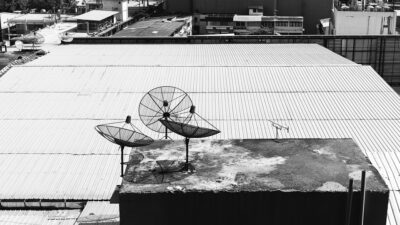As we hurtle deeper into the 21st century, one of the most transformative forces reshaping the workplace is the Internet of Things (IoT). This network of interlinked devices—spanning everything from smart office equipment to wearable technology—promises to revolutionize how we work, engage with our environment, and connect with one another. Here’s a closer look at how IoT is shaping the future of work.
Enhanced Productivity
One of the most immediate impacts of IoT on the workplace is the potential for enhanced productivity. Smart devices can automate routine tasks, freeing employees to focus on more complex and creative aspects of their jobs. For example, IoT-enabled tools can streamline communication, manage schedules, and even optimize environments for comfort and performance.
Meeting rooms equipped with smart devices can automatically adjust lighting and temperature based on occupancy while providing real-time data analytics to help companies understand usage patterns and improve space management.
Improved Decision-Making
Data is the new currency of business, and IoT is generating an unprecedented amount of it. Sensors can collect data on everything from equipment performance to employee habits. This data-driven approach allows businesses to make informed decisions, enhance operational efficiency, and better respond to problems before they escalate.
For instance, predictive analytics can notify organizations about equipment issues before they lead to costly downtimes. In a warehouse setting, IoT devices can track inventory levels in real-time, allowing for just-in-time inventory management.
Enhanced Employee Well-being
IoT technologies are not just about efficiency; they also play a vital role in enhancing employee well-being. Wearable devices that monitor health metrics and provide insights can help employees manage stress and promote healthier lifestyles.
Additionally, smart office environments can be designed to create optimal working conditions. For example, IoT systems can regulate air quality and lighting based on real-time data, ensuring that employees work in a comfortable and healthy space.
Flexibility and Remote Work
The COVID-19 pandemic accelerated the shift toward remote work, and IoT is enabling this transition to be more sustainable and effective. Tools like virtual collaboration platforms and smart devices that allow remote access to office resources mean that employees can work from virtually anywhere without sacrificing productivity.
Moreover, IoT can facilitate hybrid work environments, allowing for flexible scheduling and efficient use of physical office space. Smart calendars integrated with IoT can help employees book desks and meeting rooms, ensuring efficient resource allocation.
Security Challenges
While the benefits of IoT in the workplace are substantial, they are not without challenges. The interconnected nature of IoT devices makes them vulnerable to cyber attacks. Organizations must prioritize cybersecurity, investing in technologies and practices designed to protect sensitive information and maintain operational integrity.
By implementing robust security protocols, companies can mitigate risks. Regularly updating devices, monitoring network traffic, and conducting vulnerability assessments will be essential to safeguarding IoT systems in the workplace.
The Role of Artificial Intelligence
As IoT continues to grow, integrating artificial intelligence (AI) with IoT technologies will further enhance workplace efficiency. AI can analyze the vast amounts of data generated by IoT devices, uncovering patterns that human analysts might miss and providing actionable insights that can drive strategic decisions.
For example, AI can automate routine tasks using machine learning algorithms that optimize workflows, making it easier for organizations to adapt to changing market conditions quickly.
Conclusion
The future of work is undeniably intertwined with the Internet of Things. As smart technologies become increasingly integrated into our workspaces, we are witnessing a transformation that goes beyond mere automation. The synergy of IoT, enhanced productivity, improved decision-making, and a focus on employee well-being paints a promising picture of the workplace of tomorrow. However, organizations must remain vigilant against potential cybersecurity threats and continuously adapt to emerging technologies.
In embracing IoT, companies not only stand to gain a competitive advantage but also foster an environment that supports innovation and employee satisfaction, ensuring a robust foundation for growth in a rapidly evolving landscape. The workplace of the future is not a distant dream—it’s unfolding before our eyes, powered by the possibilities of IoT.


